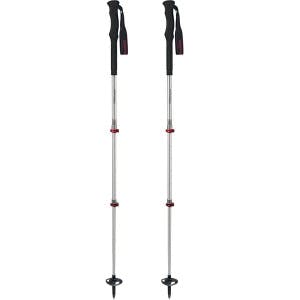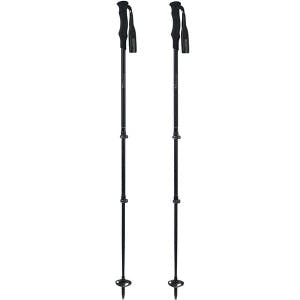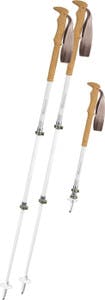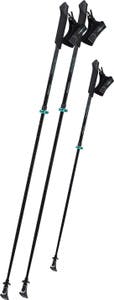Hiking poles & trekking poles
- (0)Komperdell FXP Composite Trail Running Poles - Unisex$259.95
- (9)Black Diamond Trail Back Trekking Poles - Unisex$109.95
- (9)Komperdell Walker Powerlock Compact Pole - Unisex$69.95
- (6)Black Diamond Trail Trekking Poles - Unisex$144.95
- (3)Komperdell Carbon CXP Powerlock Poles - Women's$134.94$179.95
- (4)Komperdell Ti-7 EXP Compact Powerlock Poles - Unisex$89.94$119.95
- (232)Black Diamond Alpine Carbon Cork Trek Poles - Unisex$284.95
- (50)Black Diamond Expedition 3 Poles - Unisex$164.95
- (73)Black Diamond Distance FLZ Poles - Unisex$189.95
- (0)MEC Alpinelink Compact Aluminum Folding Poles - Unisex$149.95
- (0)Komperdell Erlkonig Carbon Trail Running Poles - Unisex$399.95
- (1)MEC Alpinelink Aluminum Folding Poles - Unisex$149.95
- (12)Trail Cork Trekking Poles$159.95
- (0)Salomon Quest Carbon Trekking Poles - Unisex$179.95
- (0)Camp Sonic ALU Plus Trekking Poles - Unisex$169.95
- (27)Black Diamond Distance Carbon FLZ Trekking Poles - Unisex$259.95
- (0)MEC Ridgelink Aluminum 3 Part Cork Grip Antishock Poles - Unisex$79.95
- (0)Komperdell FX Lite Carbon Folding Z Poles - Unisex$199.95
- (0)MEC Downlink Aluminum 3 Part Poles - Unisex$69.95
- (7)Komperdell Carbon CXP Powerlock Poles - Men's$134.94$179.95
- (0)MEC Uplink Aluminum 3 Part Cork Grip Poles - Unisex$109.95
- (4)Black Diamond Traverse Compactor Poles$234.95
- (20)Black Diamond Distance Carbon Z Poles - Unisex$229.95
- (8)Black Diamond Pursuit Carbon Z Trekking Poles - Unisex$269.95
- (65)Black Diamond Pursuit FLZ Trekking Poles - Unisex$199.95
- (1)Komperdell Borea Carbon Pro Poles - Women's$169.95
- (21)Black Diamond Pursuit Shock Trekking Poles - Unisex$209.95
- (0)Komperdell FX Lite Compact Carbon Folding Z Poles - Unisex$199.95
- (4)MEC Gromlin Jr Trekking Poles - Youths$33.71$44.95
- (2)Salomon Ultra Carbon Trail Running Poles - Unisex$179.95
- (2)Komperdell Sarma Powerlock Nordic Walking Poles - Unisex$99.95
- (0)Camp Backcountry Bamboo Trekking Poles - Unisex$169.95
- ‹
- 1
- ›
Compare (0)
Hiking and trekking poles to improve your hike
Whether you're heading out for a short walk or a long trek, hiking poles can make a big difference. They provide extra stability, reduce knee strain, and help you maintain balance on uneven terrain. Plus, they can make hiking more enjoyable by providing extra support and reducing fatigue on longer trails. Hiking poles from brands like Black Diamond, Komperdell and more can all be found at your local MEC or online.
Types of trekking poles
There are a few different types of hiking poles to consider. Telescoping poles are adjustable in length, offering versatility for varying terrain. Folding poles are compact and easy to pack, perfect for travelers or minimalist hikers. Fixed-length poles offer simplicity and are often used by ultralight hikers or trail runners who prefer a lightweight option.
Comfort and grip
When choosing hiking poles, comfort is key. The grip material is something to think about — cork is breathable and molds to your hands, making it great for warm conditions, while foam grips are soft and lightweight. Rubber grips are perfect for colder climates since they offer insulation. Some poles even come with shock absorption to reduce strain on your wrists and elbows, especially on longer hikes.
Pole tips and baskets
The tips of your poles play a role in how they perform. Most hiking poles feature durable carbide or steel tips that grip well on dirt and rock surfaces, but you can add rubber tips for smoother trails or pavement. If you're hiking in snow or mud, larger baskets near the tip will prevent the poles from sinking in and give you better stability.
Choosing the right length
Getting the right pole length is essential for a comfortable hike. A simple rule is that when you plant the tip of the pole on the ground, your elbow should be bent at about a 90-degree angle. Adjust the length for different parts of your hike — shorten them when climbing uphill and lengthen them for descents. For more information, check out our article on how to choose hiking and trekking poles.
































